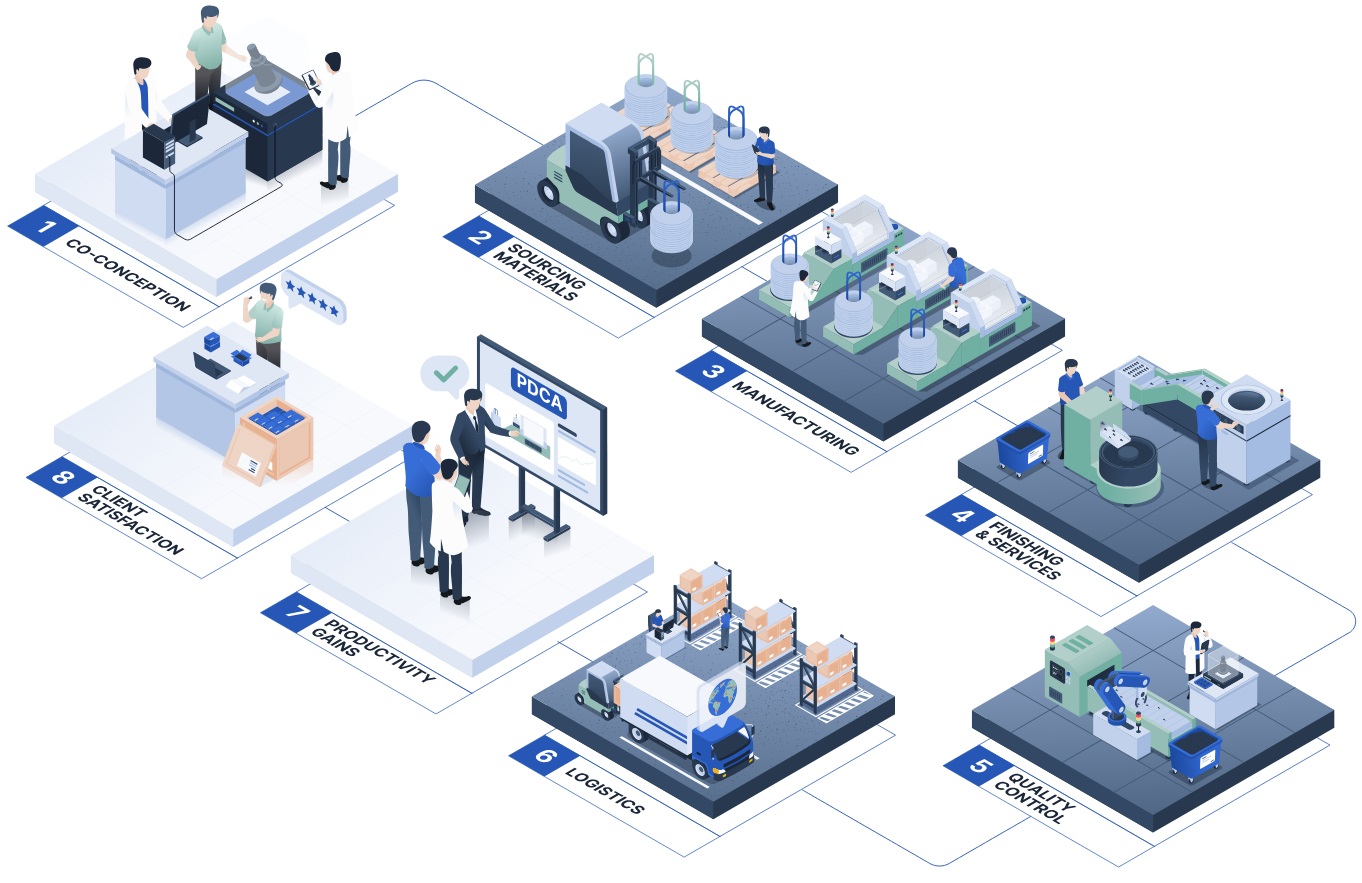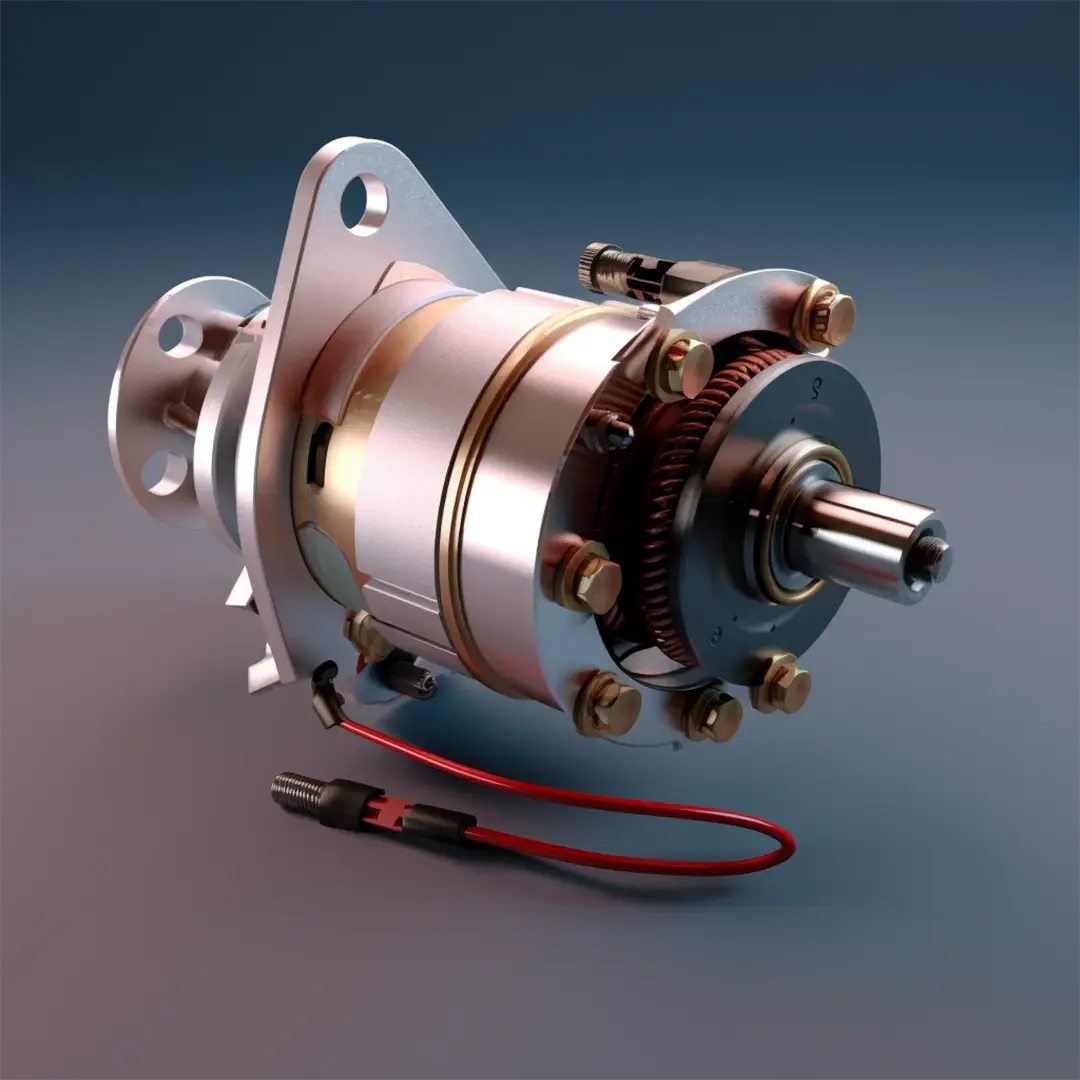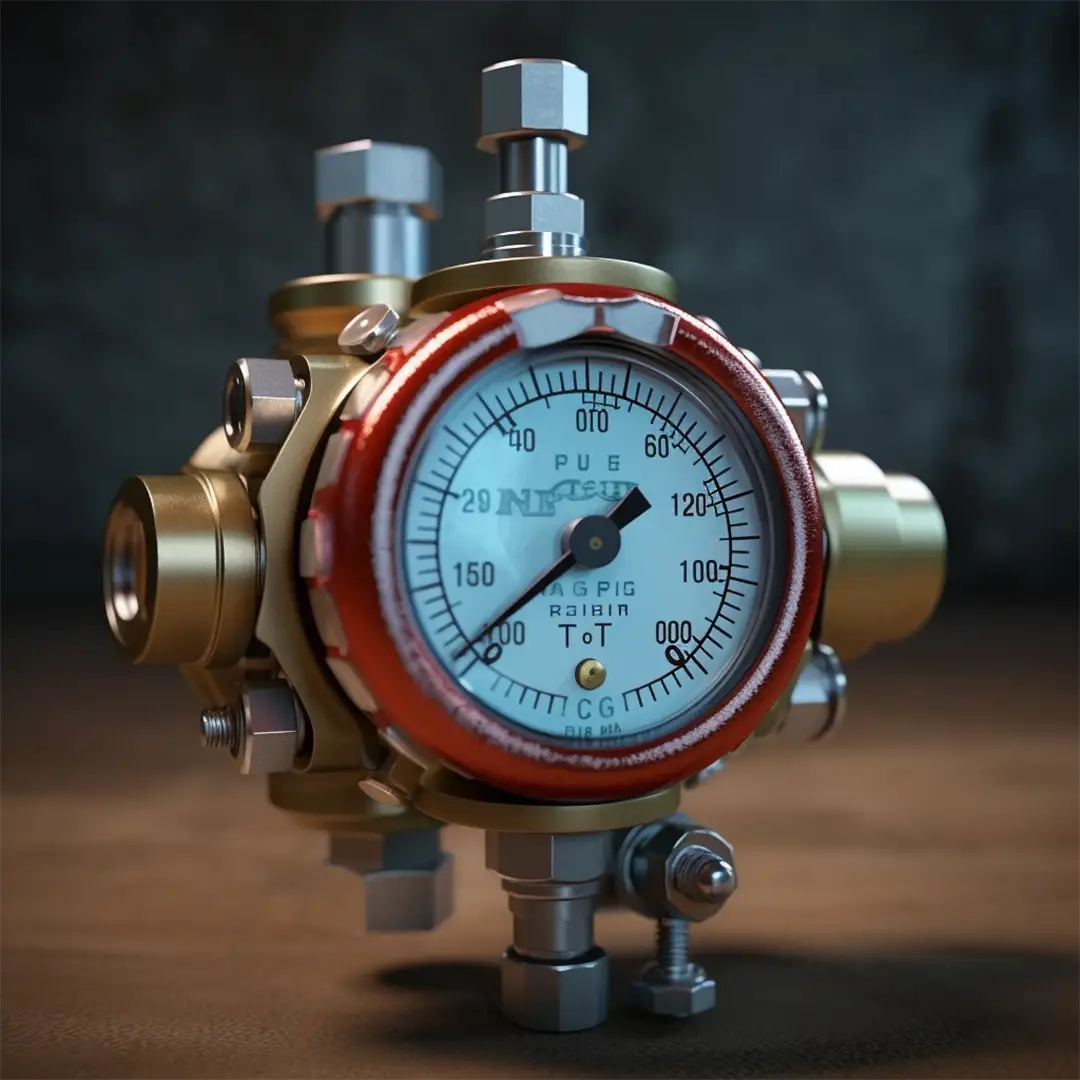2, rue de la Ternière
Avrillé cedex FRANCE
- 35 million casings designed each year
- Co-designer of custom fasteners for 100 years and manufacturer of standard products
- From M2.5 to M20 and from 6 mm to 22 mm
- Steel, stainless steel, brass, etc. (other materials available on request).
Threaded bushes are fasteners designed with an internal tap and external thread. They enable the assembly and fastening of plastic parts with high pull-out strength. What's more, they can be screwed and unscrewed without limit. These parts can also be overmolded.
Threaded bushing - threaded spacer





Threaded bushing - threaded spacer







- Feasibility checks using the FMEA tool, which is used to analyze failure modes, their effects and criticality.

- Production of initial samples in medium series, and validation of production with PPAPs in accordance with IATF 16949.

- Development of detailed production processes according to the APQP quality process

- Collection and analysis of production data to identify trends and variations. 3PPM in 2023.
The advantages of manufacturing with LGC Industries


.png)

.png)


- 24 Multi-spindle lathes
- 45 Tours Escomatic
- 42 Banding machines
- 8 Plunge and enfilade grinders
Find out more about the technical features of our products
Discover other products
The threaded bushing: assembly and fastening in a single piece
Threaded bushes are an essential part of a solid, long-lasting fastening system. Thanks to their cylindrical design with an internal tap and external thread, they offer excellent pull-out resistance.
You can screw and unscrew them at will, making assembly and disassembly much easier.
At LGC, we understand the importance of tailoring solutions to meet your specific needs. That's why we're with you every step of the way, offering prototyping, measurement and pull-out services.
What's more, our expertise enables us to help you industrialize your project by offering efficient installation and assembly solutions.
How is an LGC threaded bushing made?
From material to threaded bushing
The manufacturing process for threaded bushes begins in a similar way to that for threaded inserts and self-tapping bushes.
The first step is to externally thread the reel of raw material.
This stage is called rolling, as the bushing is passed between 3 rollers, and the rolling system cold-forms the part by compressing it to create the thread.
Cold forming has the advantage of reinforcing the material's elastic resistance.
For example, a threaded bushing tapped into a rolled material will have better pull-out resistance than a rolled material.
The second step is to cut the tube from the raw material on a suitable machine. The tube is cut to the desired length.
Chamfers and finishes can be added to the material.
The part then goes through a grinding stage.
A roller presses the workpieces against a grinding wheel rotating at high speed.
Thanks to the abrasion of the grinding wheel, the diameter of the part is modified to achieve tolerances of a few microns (~5-6 μm).
Finally, it's time for tapping! This is the internal thread of the bushing.
To do this, a rotating tap passes inside the part to give it the right thread.
What are the advantages of a threaded bushing?
- Reinforcement in soft materials: the threaded bush reinforces fasteners in soft materials, offering increased strength for screw and bolt fasteners. This is particularly useful in assemblies subject to heavy loads.
- Increased service life: thanks to its ability to provide a more resistant thread, the threaded socket extends the service life of the assembly by minimizing thread wear over time.
- Reduced risk of thread stripping: these bushes reduce the risk of thread stripping, ensuring stable fastening even in conditions where loads may vary.
- Ease of repair: in the event of damaged threads, a threaded bushing offers an efficient repair option, eliminating the need to replace costly components.
- Application in demanding environments: the tapped threaded bushing stands up well to demanding environments, offering a reliable solution even in conditions where other fastening methods might fail.
Would you like to find out more about the design of our sockets?
Visit our dedicated article: All you need to know about LGC sockets





















